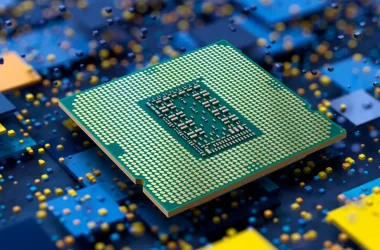Table of Contents Show
If you’re a web designer, developer, or host, you’ve probably come across Java at some point. This useful software protocol is a versatile way of writing and implementing programs on your site, and it’s been used for various purposes, including early mobile phone apps, tablet systems, and in-browser games and other applets. Suffice it to say that Java is one of the most important elements of the internet’s history, and while you’re unlikely to be aware of its significance if you’re not ‘in the knowâ, so to speak, you’ve almost certainly used it at some point.
So, with that in mind, what kind of programs use or interact with Java? Well, Apache Tomcat is one of them, and if you’ve heard of this app, you’re probably wondering ‘what is Tomcat?â. We’re here to help with that question. Tomcat is one of the most popular web development apps for those whose platforms are dynamic and in constant need of updating and changing, and there’s a good reason for that. So, what is Tomcat to web developers, and why are they keen on using it? Here’s our breakdown of Apache Tomcat and everything it can do.
Apache Tomcat enables interaction with Java servlets
There’s really no way of answering the question ‘what is Tomcat?’without getting technical, but we’ll try to keep it as simple as possible. Apache Tomcat is a way for websites to make contact with Java servlets, which, in turn, are pieces of software that let web servers handle Java content online. In essence, a Java servlet is basically the same as PHP, but with Java language implementation. You can think of Apache Tomcat as a sort of facilitator of Java content for web developers and hosts; it’s not a traditional web server, but more of a ‘web containerâ.
What is Apache Tomcat useful for?
Apache Tomcat is mostly useful if your website is going to be using a lot of Java content, and you need something to parse that content. Apache’s traditional HTTPS server, which is just called Apache, can’t handle Java servlets or JSP (Jakarta Server Pages) natively, so Tomcat was developed in order to implement that aspect. Tomcat has since evolved into its own beast, appropriately enough, but it was originally designed to sit alongside Apache and provide the Java functionality that Apache couldn’t.
Tomcat vs traditional web servers
It’s not really helpful to pit Tomcat against traditional web servers, so if you see anyone trying to facilitate a comparison between the two, then you should be wary of them. Tomcat is designed to take care of Java-based sites and JSP implementation, and so if your HTTPS site has a lot of PHP content, then you’re not going to be using Tomcat for your server solution. If, however, you’ve got a lot of Java and JSP content on your site, then Tomcat is ideal for you. It’s a niche product with a niche audience, and Apache is well aware of that.
The history of Tomcat
Tomcat’s history is rather nerdy, as you might expect, but it’s still interesting to delve into. It was originally created in 1998 by software designer James Davidson, who worked for Sun Microsystems (whose name you might recognise as the creator of the Java language). Davidson clearly decided that Java needed an implementation protocol for online content, and so he created Apache Tomcat.
Davidson was part of the effort to make Tomcat open-source, which is a term that means anyone can access its code and see how the sausage is made, so to speak. It makes perfect sense for Tomcat to be open-source; it’s a useful piece of software that anyone should be able to use. Fun fact: Tomcat’s creation also indirectly led to software build automation tool Apache Ant being created.
The name ‘Tomcat’comes from Davidson’s intent that the program should be able to fend for itself when it came to rendering Java content and applets. Davidson wanted his project to have an O’Reilly book associated with it. If you’re not familiar with O’Reilly books, they’re essentially tech bibles that come with animal-based covers. Eventually, Tomcat would receive an O’Reilly book, although given that a tomcat was already an animal featured on the cover of one of the company’s books, Tomcat’s book got a snow leopard instead. So it goes.
The future of Tomcat
It’s not looking like Apache Tomcat is going to slow down anytime soon. As a niche product that serves its purpose very well indeed, people are always going to need it as long as the Java programming language remains relevant. Given Java’s convenience and ease of use for programmers (although there are certainly criticisms of the platform), it’s hard to imagine that there will come a time when web designers no longer need Java. As such, Tomcat will likely always maintain a position of relevance in the server and software worlds.
So, should you use Tomcat? That depends. Do you have a site that predominantly depends on Java content and JSP applets, or are you mostly working in PHP or another language? If you’re not using Java, then you really have no need to use Tomcat either; it’s a very specific server app that serves a very specific purpose. If, however, you are using Java for a lot of your content, then you should definitely consider using Tomcat, as it will almost certainly make your life a lot easier.









